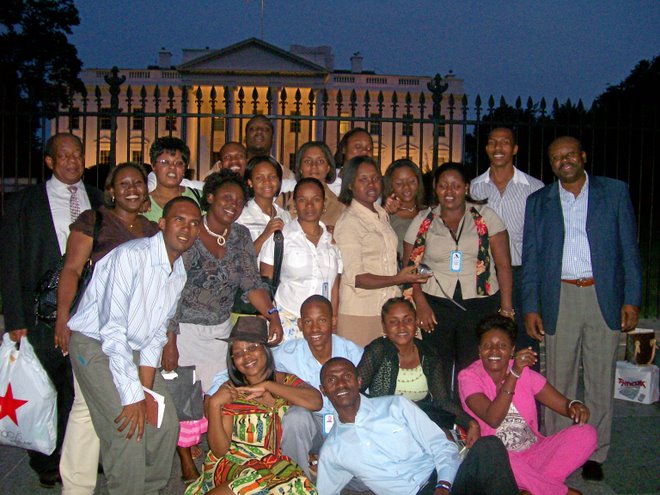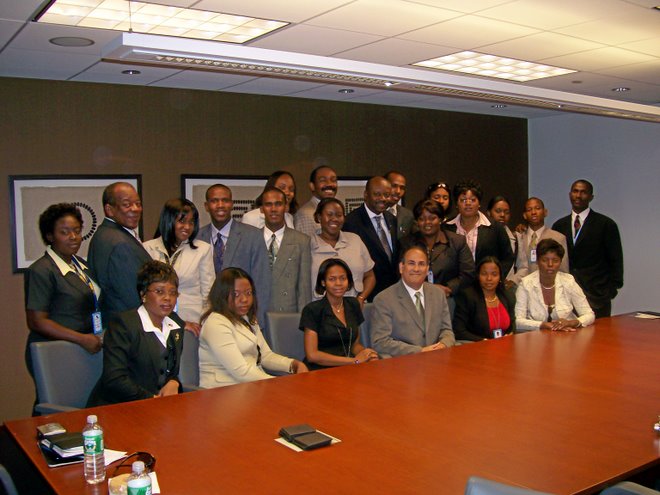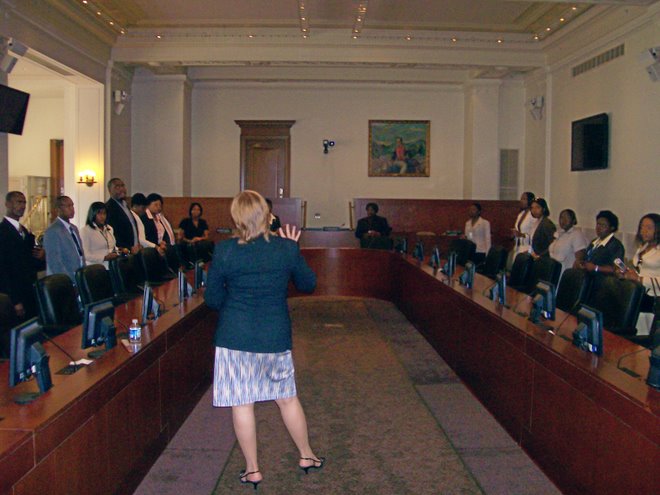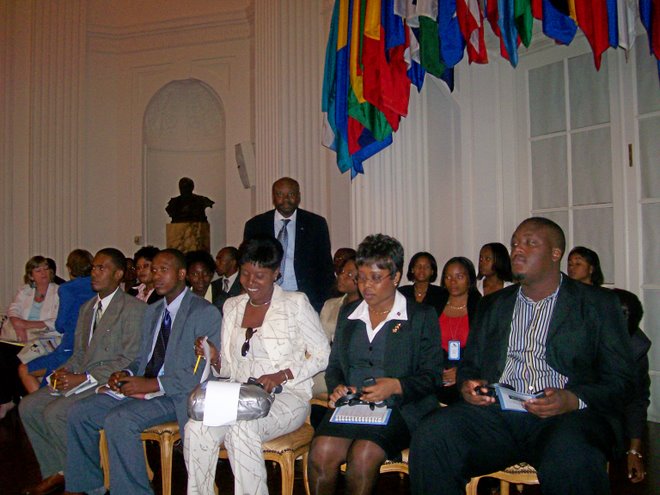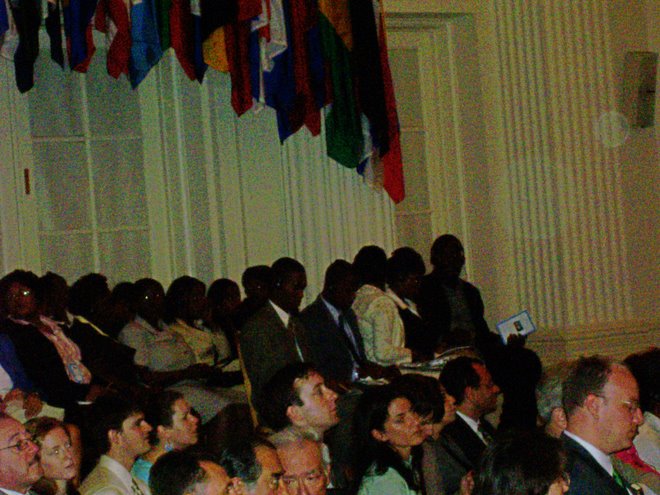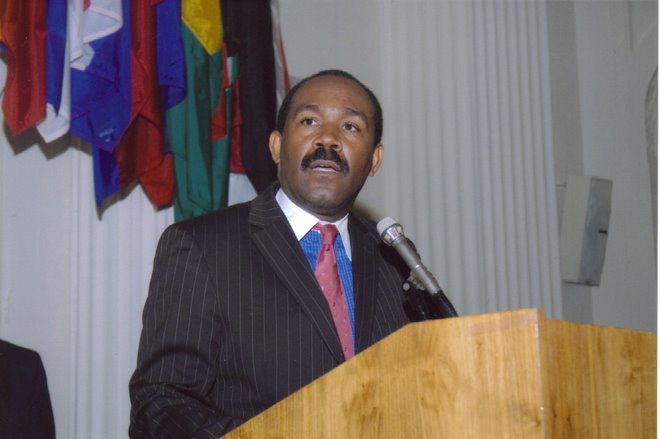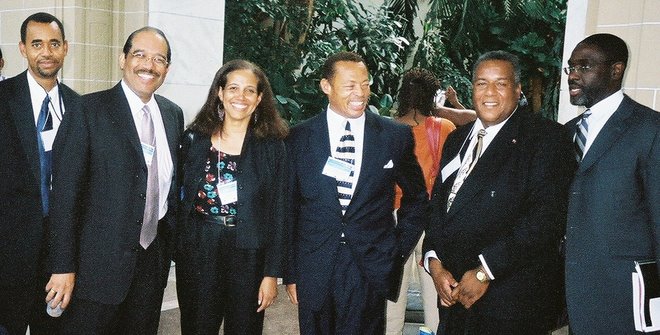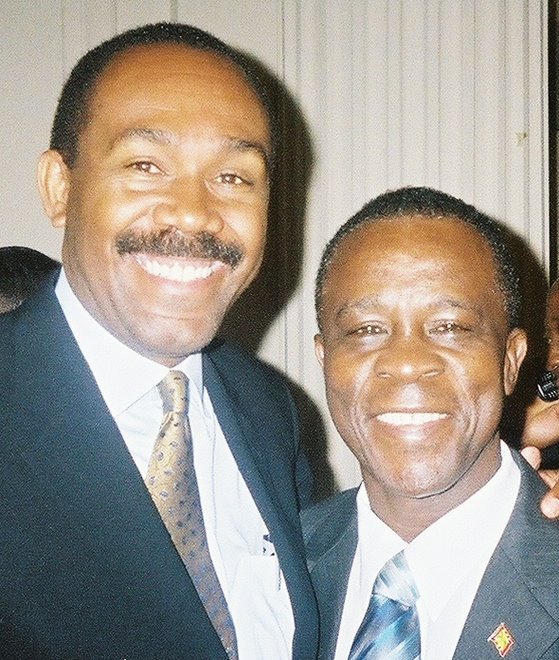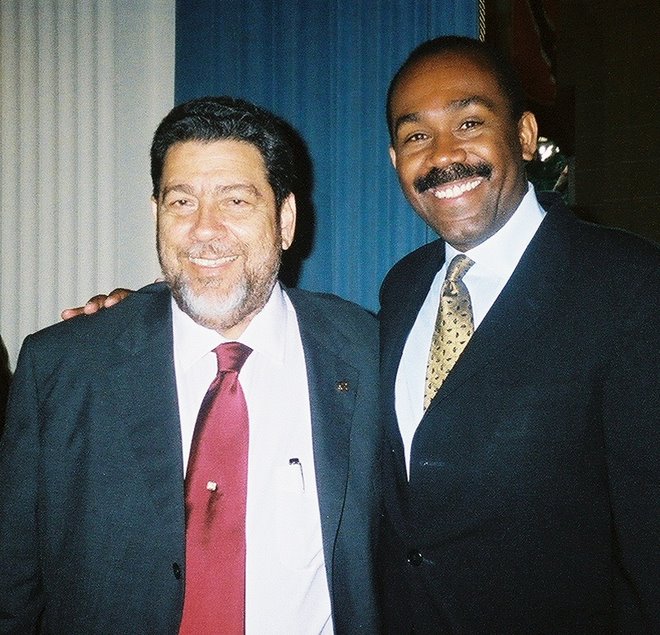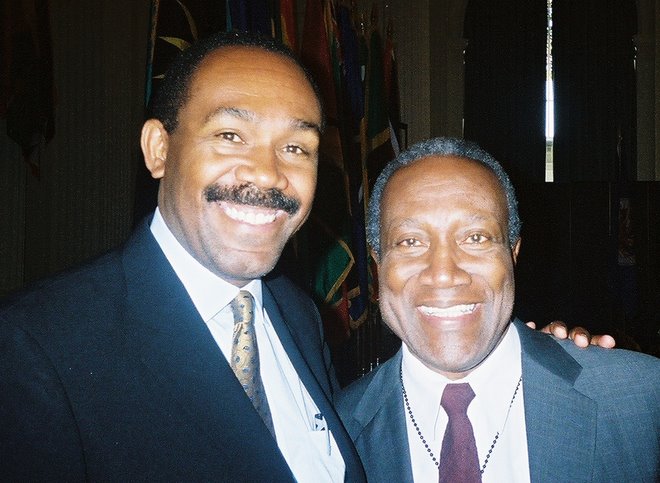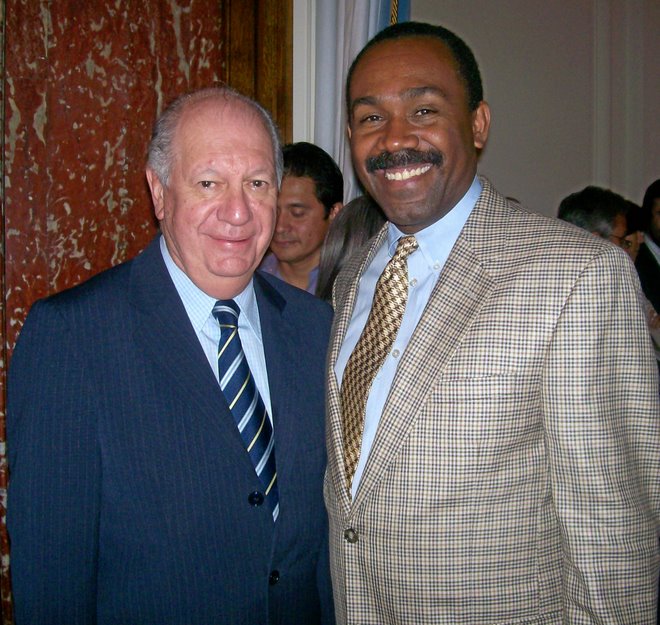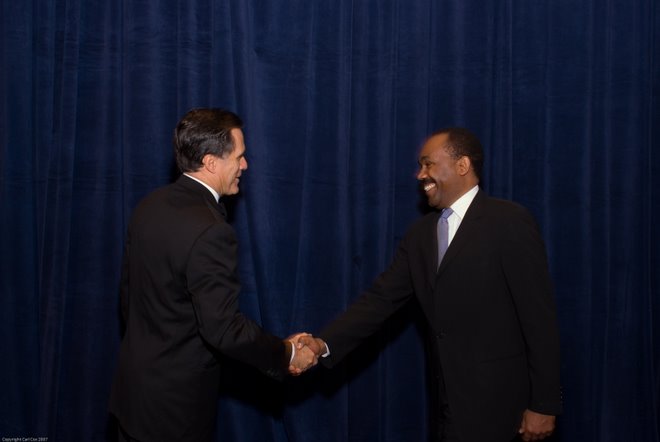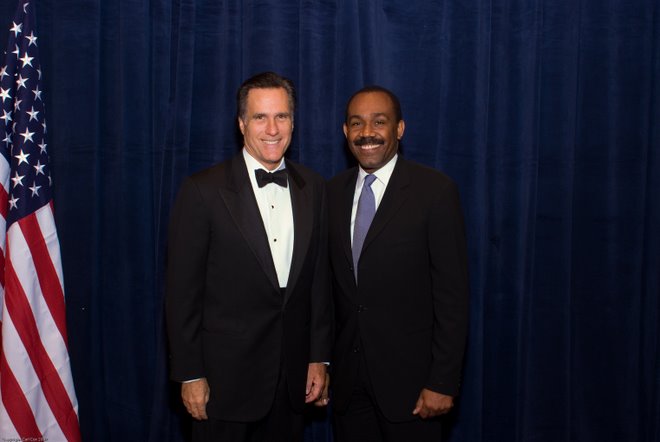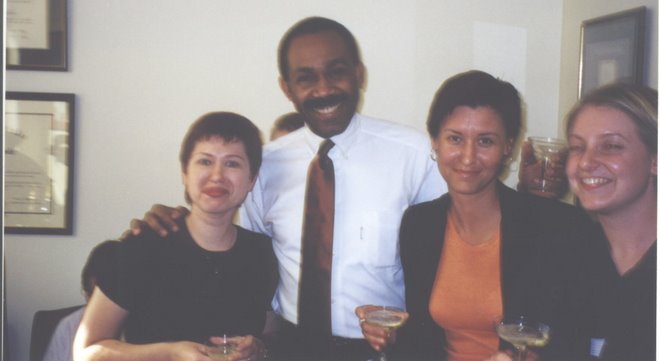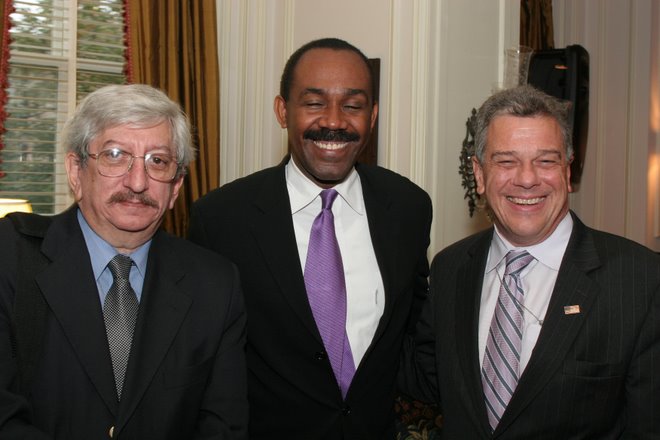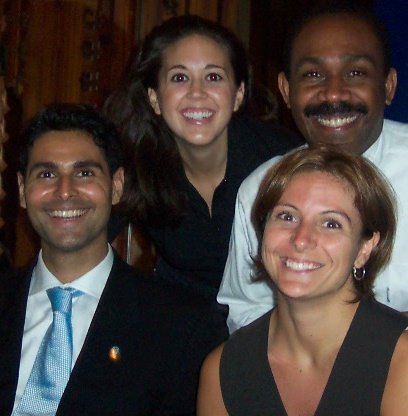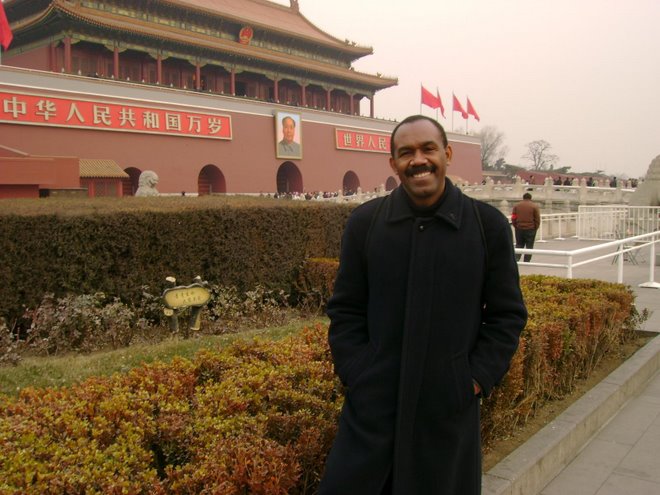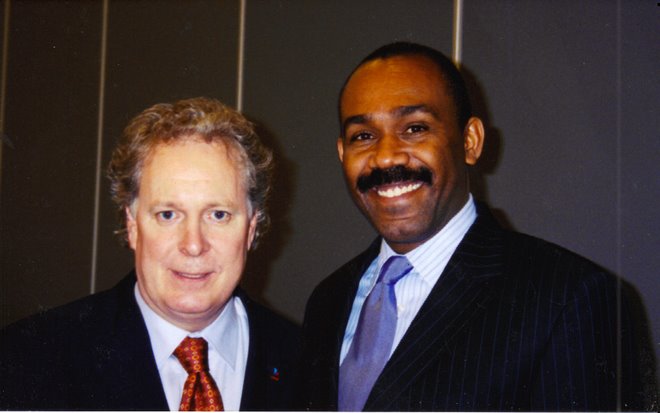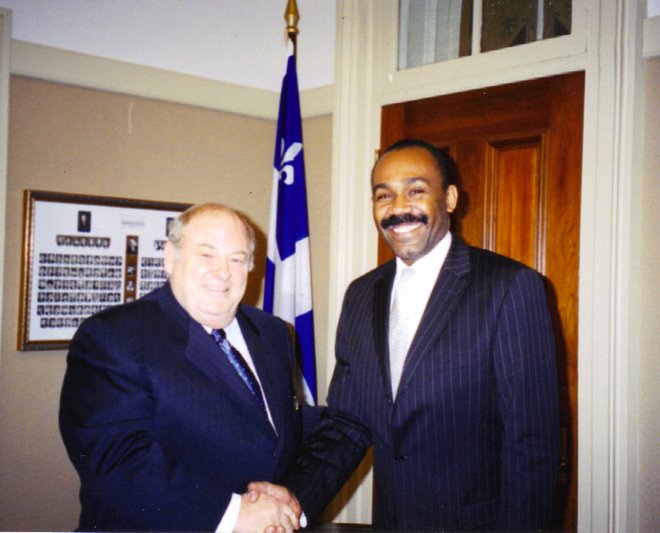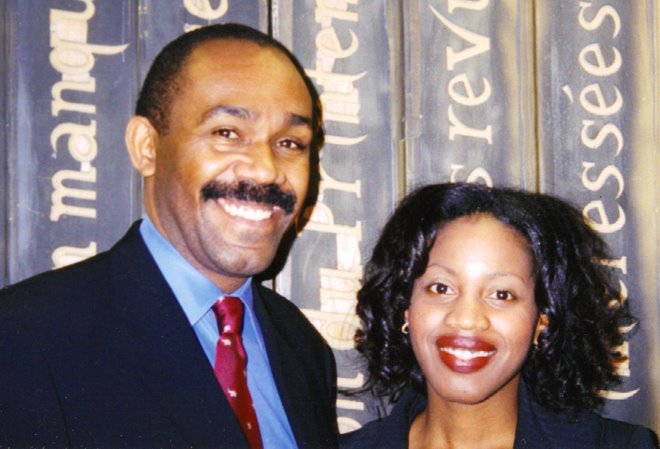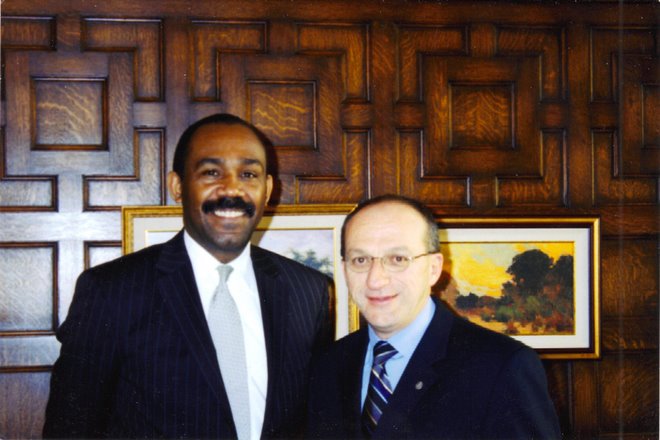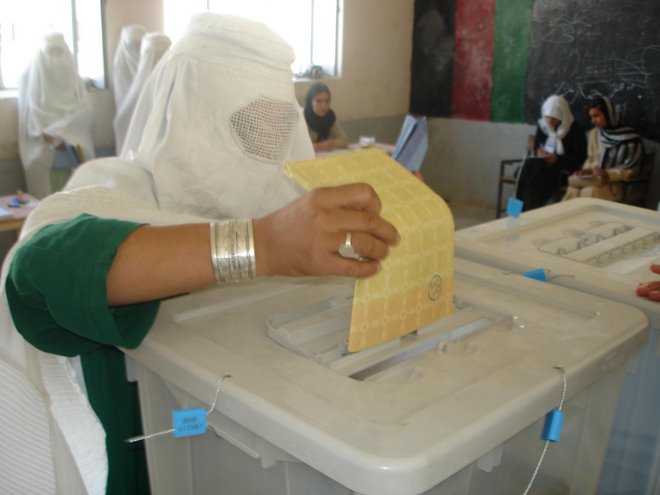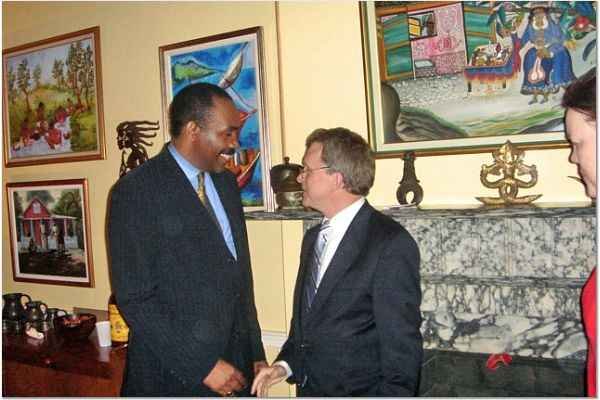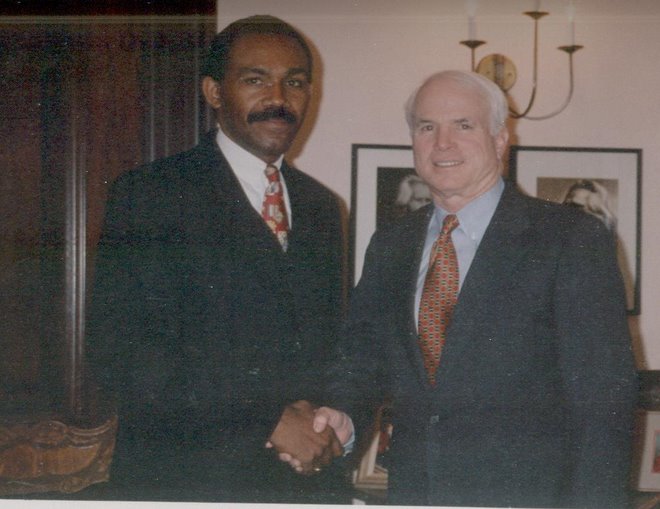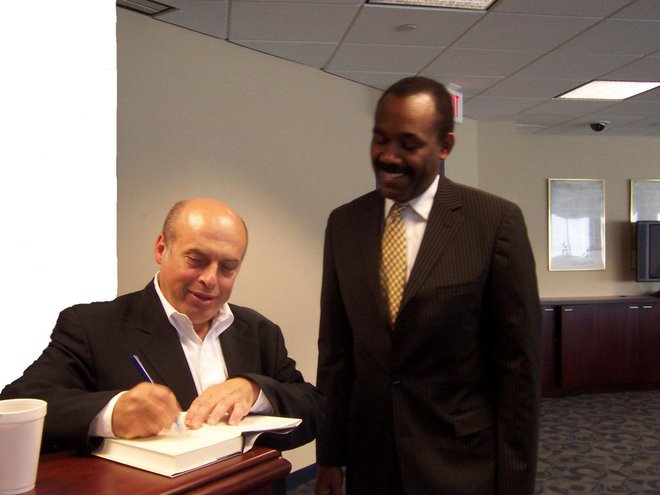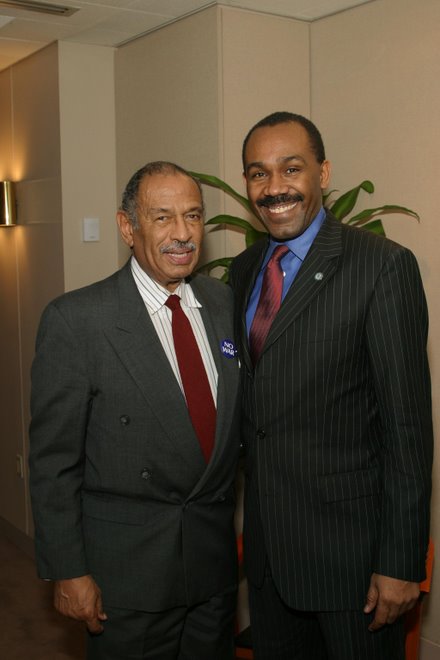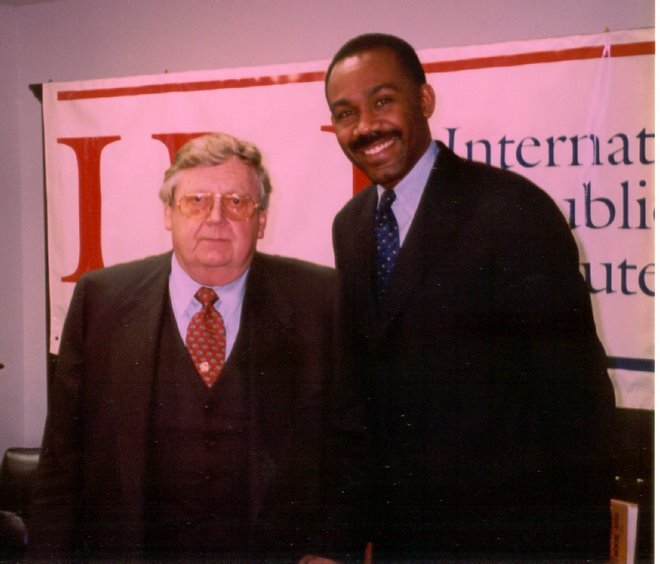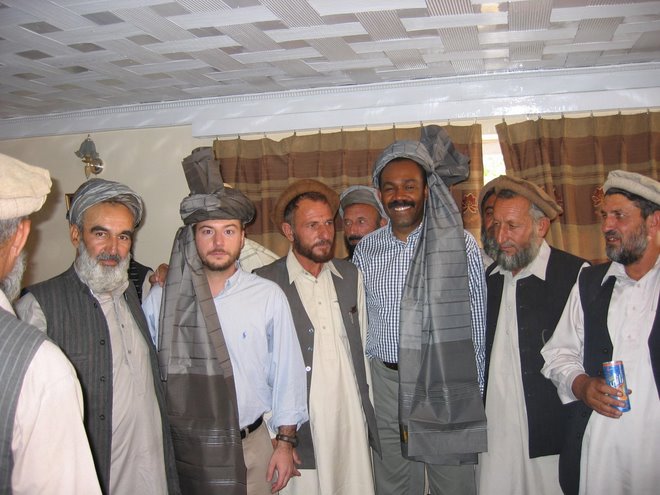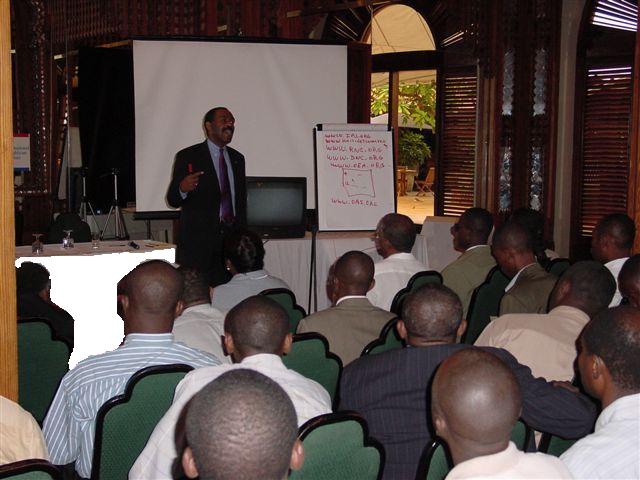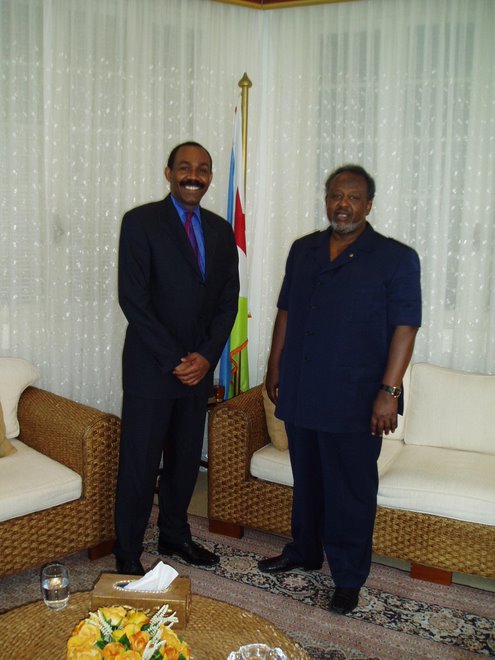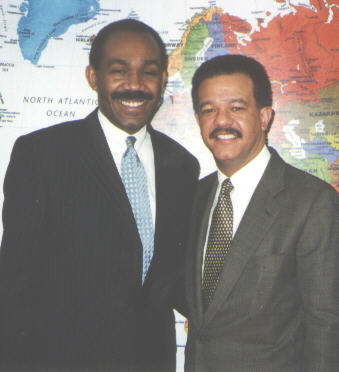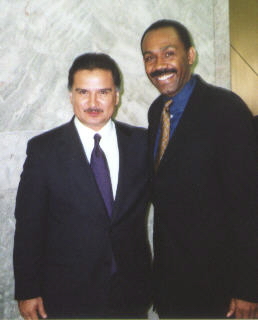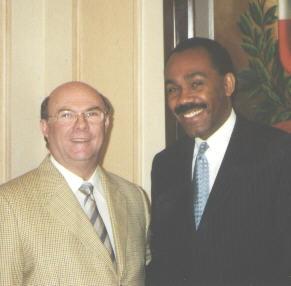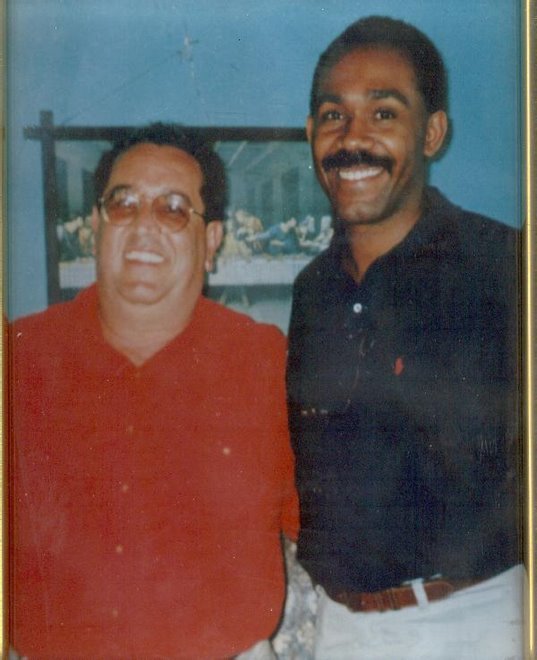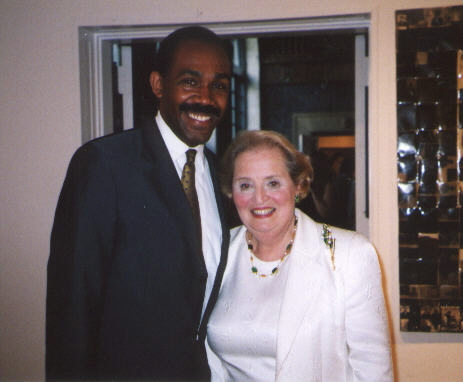By  Robert Perito and Greg MalyJune 2007
Robert Perito and Greg MalyJune 2007
on May 8, 2007, President Bush promised Haitian President René Préval that the United States would do more to help Haiti fight drugs and drug traffickers. Préval agreed that drugs threaten Haiti’s government, which lacks the capacity to fight international narcotics trafficking alone. The two presidents were right to emphasize this issue. The nearly unimpeded flow of narcotics through Haiti undermines the rule of law and the legitimacy of Haiti’s government. It fosters corruption in the police, courts, and customs; fuels weapons trafficking; finances armed gangs; breeds insecurity; and hampers economic development by discouraging investment and tourism. Haiti is an important transshipment point for cocaine reaching the United States and a major concern for American authorities.
The nature of the threat to Haiti from narcotics trafficking and the nature of U.S. counter-narcotics assistance were discussed by a panel of experts at a meeting of the Institute’s Haiti Working Group on June 8, 2007. Panelists included Alexander Toth, chief, Latin America and Caribbean Section, Office of Enforcement Operations, U.S. Drug Enforcement Agency; Kevin Brown, head of the Caribbean and Central American Section, International Narcotics and Law Enforcement Bureau, U.S. Department of State; Leon Charles, minister counselor, Embassy of Haiti and former director of the Haitian National Police; and, Dr. Marie-Claude Rigaud, a distinguished life fellow of the American Psychiatric Association. Robert Perito, director of the USIP Haiti Working Group, served as moderator. Following is a summary of the views expressed by the speakers and the audience during the meeting. It does not represent the views of the U.S. Institute of Peace, which does not take policy positions.
Haiti Is an Important Transshipment Point for Cocaine...
 Shipments through Mexico and Central America account for 90 percent of the cocaine exported from South America to the United States. The remaining ten percent is shipped through central and eastern Caribbean. In recent years, successful enforcement efforts in Jamaica have reduced trafficking through that country. At the same time, President Chavez’s anti-American policies have reduced counter-narcotics cooperation and resulted in sharply increased cocaine shipments from Venezuela through Haiti and the Dominican Republic on the Island of Hispaniola. U.S. government agencies estimate that 83 metric tons or about eight percent of the cocaine entering the United States in 2006 transited either Haiti or the Dominican Republic.
Shipments through Mexico and Central America account for 90 percent of the cocaine exported from South America to the United States. The remaining ten percent is shipped through central and eastern Caribbean. In recent years, successful enforcement efforts in Jamaica have reduced trafficking through that country. At the same time, President Chavez’s anti-American policies have reduced counter-narcotics cooperation and resulted in sharply increased cocaine shipments from Venezuela through Haiti and the Dominican Republic on the Island of Hispaniola. U.S. government agencies estimate that 83 metric tons or about eight percent of the cocaine entering the United States in 2006 transited either Haiti or the Dominican Republic.
Haiti has 1,200 miles of unprotected coastline and 225 miles of un-patrolled land border. Drug shipments by "fast boats" and small planes land at tiny ports and on clandestine airstrips scattered along Haiti’s southern coast. Haiti’s under-strength and dysfunctional police force is unable to respond to the challenge, as traffickers often take as little as five minutes to offload their cargo and refuel. Haiti’s tiny coast guard has only two patrol boats, 95 personnel, and no air assets. Corruption among Haiti’s law enforcement authorities is common. A near-record seizure of 925 pounds of cocaine on May 31, 2007 in the coastal town of Loegane highlights Haiti’s problems. The drugs were discovered at a road checkpoint in vehicles with government license plates. Five police officers were among the ten people arrested.
Faced with a nearly overwhelming challenge from international drug traffickers, Haiti’s government has been frank about the need for international assistance. In a speech to the Haitian Parliament on January 10, 2007, Préval alleged that the United States had failed to fulfill its obligations under the 1998 bilateral drug enforcement agreement, which permitted the United States to conduct counter-narcotics operations in and around Haiti. Préval said the United States needed to do more to interdict drug shipments and dismantle drug gangs. On March 16, 2007, Préval joined leaders from the Dominican Republic, Jamaica, Colombia, Grenada, and Trinidad and Tobago and representatives from Europe and the United States at a regional summit on Drugs, Security, and Cooperation in the Caribbean. Préval called for increased foreign assistance for the Caribbean as part of a global battle against narcotics traffickers: "If we are left alone, the drug-trafficking giants are going to devour us in one bite." On May 18, in a Haitian Flag Day speech, Préval declared a "war without end" against corruption, smuggling and drug trafficking.
U.S. Counter-Narcotics Programs Short of Funds and Resources
The United States has made a good faith effort to control the flow of narcotics through Haiti and the Dominican Republic within the limits of available resources. Following the terrorist attacks on September 11, 2001, the U.S. Coast Guard re-deployed assets from the eastern Caribbean to the U.S. mainland to improve port security. This reduced the U.S ability to interdict drugs transiting the Caribbean. At the same time, U.S. national priorities such as the wars in Iraq and Afghanistan reduced overall resources that might have been available for funding drug enforcement operations in Haiti. Additional limitations come from the inability of the Haitian government and security services to effectively utilize assistance and the reality of high levels of official corruption in Haiti. Yet, U.S. and Haitian counter-narcotics efforts have proven effective when vigorously applied.
In 2006, U.S. authorities tracked 159 drug flights from South America to Haiti and the Dominican Republic. From March to May 2007, the U.S. Drug Enforcement Agency (DEA) conducted Operation Rum Punch and Rum Chaser, which involved an intensive effort to reduce drug flights and seize drug shipments. During the operation, there was more than a 40 percent drop in the number of drug flights into Haiti compared to the previous four months. Of those flights that came through, four were interdicted yielding the seizure of over 1,135 kilograms of cocaine. Subsequently, there was a dramatic decrease in the number of suspected drug flights from Venezuela and Colombia into Haiti and a shift of airdrops and clandestine landings of aircraft carrying cocaine to the Dominican Republic.
For the long term, however, programs to reform the Haitian National Police (HNP) remain the cornerstone of U.S. efforts to control the transshipment of narcotics through Haiti. Without an effective Haitian police force there is little prospect of solving Haiti’s narcotics-related problems. The United States has contributed $40 million in training and equipment for the HNP, the country’s only security force. Assistance included upgrades for the police academy, a model police stations program, and provision of communications, vehicles, uniforms, and related gear. The HNP’s special counter narcotics unit has 45 vetted officers and has received U.S. training, equipment and support for operations. Within this unit, DEA has specially selected and trained a Sensitive Investigative Unit composed of officers who collect intelligence and conduct operations against major traffickers. The U.S. Coast Guard provides equipment and training to its Haitian counterpart, which conducts limited operations from bases at Killick and Cap Haitien. The United States also provides technical assistance to a financial investigative unit located at the Haitian Central Bank that deals with money laundering and official corruption. Overall U.S. drug-related assistance to Haiti has totalled about $1 million annually since 2004.
Critics of the U.S. counter-narcotics effort believe the United States could do more, particularly given the seriousness of the threat. They argue that the following steps could be undertaken without a major increase in financial resources:
A full complement of DEA officers could be assigned to the U.S. Embassy in Port au Prince. During 2006, several of the five DEA positions at the embassy were not filled.
The U.S. Coast Guard could join with regional partners under the Caribbean Regional Maritime Cooperation Agreement to deploy additional units and increase assistance to their Haitian counterparts. The U.S. Coast Guard concentrates its effort north of Haiti to interdict Haitian migrants rather than patrolling south of Haiti to interdict drugs.
The United States could reassign aircraft from the large Blackhawk helicopter force that operates in Colombia to Haiti to support UN and HNP counter drug operations.
MINUSTAH, the UN mission in Haiti, could become more involved in counter-narcotics efforts. The United States could assign experienced counter-narcotics specialists to the UN police force.
Greater international attention could be paid to controlling Haiti’s border with the Dominican Republic.
The Caribbean Community and Common Market (CARICOM) could create a regional special court to deal with drug traffickers that would be funded by international donors.
Domestic Drug Abuse Is Not a Problem
Ironically, Haiti’s status as the poorest country in the Western Hemisphere and the fact that most Haitians still live in rural areas have prevented the development of an internal drug abuse problem. Some traditional use of marijuana continues, but cocaine and heroine are beyond the purchasing power of all but a tiny fraction of Haiti’s population. Moreover, social cohesion and traditional moral values still hold sway in rural areas preventing young people from experimenting with drugs. This may not always remain the case, however. Experience in other countries shows that drug flows through transit countries eventually leave a growing residue of local drug addiction.
 Robert Perito and Greg MalyJune 2007
Robert Perito and Greg MalyJune 2007on May 8, 2007, President Bush promised Haitian President René Préval that the United States would do more to help Haiti fight drugs and drug traffickers. Préval agreed that drugs threaten Haiti’s government, which lacks the capacity to fight international narcotics trafficking alone. The two presidents were right to emphasize this issue. The nearly unimpeded flow of narcotics through Haiti undermines the rule of law and the legitimacy of Haiti’s government. It fosters corruption in the police, courts, and customs; fuels weapons trafficking; finances armed gangs; breeds insecurity; and hampers economic development by discouraging investment and tourism. Haiti is an important transshipment point for cocaine reaching the United States and a major concern for American authorities.
The nature of the threat to Haiti from narcotics trafficking and the nature of U.S. counter-narcotics assistance were discussed by a panel of experts at a meeting of the Institute’s Haiti Working Group on June 8, 2007. Panelists included Alexander Toth, chief, Latin America and Caribbean Section, Office of Enforcement Operations, U.S. Drug Enforcement Agency; Kevin Brown, head of the Caribbean and Central American Section, International Narcotics and Law Enforcement Bureau, U.S. Department of State; Leon Charles, minister counselor, Embassy of Haiti and former director of the Haitian National Police; and, Dr. Marie-Claude Rigaud, a distinguished life fellow of the American Psychiatric Association. Robert Perito, director of the USIP Haiti Working Group, served as moderator. Following is a summary of the views expressed by the speakers and the audience during the meeting. It does not represent the views of the U.S. Institute of Peace, which does not take policy positions.
Haiti Is an Important Transshipment Point for Cocaine...
 Shipments through Mexico and Central America account for 90 percent of the cocaine exported from South America to the United States. The remaining ten percent is shipped through central and eastern Caribbean. In recent years, successful enforcement efforts in Jamaica have reduced trafficking through that country. At the same time, President Chavez’s anti-American policies have reduced counter-narcotics cooperation and resulted in sharply increased cocaine shipments from Venezuela through Haiti and the Dominican Republic on the Island of Hispaniola. U.S. government agencies estimate that 83 metric tons or about eight percent of the cocaine entering the United States in 2006 transited either Haiti or the Dominican Republic.
Shipments through Mexico and Central America account for 90 percent of the cocaine exported from South America to the United States. The remaining ten percent is shipped through central and eastern Caribbean. In recent years, successful enforcement efforts in Jamaica have reduced trafficking through that country. At the same time, President Chavez’s anti-American policies have reduced counter-narcotics cooperation and resulted in sharply increased cocaine shipments from Venezuela through Haiti and the Dominican Republic on the Island of Hispaniola. U.S. government agencies estimate that 83 metric tons or about eight percent of the cocaine entering the United States in 2006 transited either Haiti or the Dominican Republic.Haiti has 1,200 miles of unprotected coastline and 225 miles of un-patrolled land border. Drug shipments by "fast boats" and small planes land at tiny ports and on clandestine airstrips scattered along Haiti’s southern coast. Haiti’s under-strength and dysfunctional police force is unable to respond to the challenge, as traffickers often take as little as five minutes to offload their cargo and refuel. Haiti’s tiny coast guard has only two patrol boats, 95 personnel, and no air assets. Corruption among Haiti’s law enforcement authorities is common. A near-record seizure of 925 pounds of cocaine on May 31, 2007 in the coastal town of Loegane highlights Haiti’s problems. The drugs were discovered at a road checkpoint in vehicles with government license plates. Five police officers were among the ten people arrested.
Faced with a nearly overwhelming challenge from international drug traffickers, Haiti’s government has been frank about the need for international assistance. In a speech to the Haitian Parliament on January 10, 2007, Préval alleged that the United States had failed to fulfill its obligations under the 1998 bilateral drug enforcement agreement, which permitted the United States to conduct counter-narcotics operations in and around Haiti. Préval said the United States needed to do more to interdict drug shipments and dismantle drug gangs. On March 16, 2007, Préval joined leaders from the Dominican Republic, Jamaica, Colombia, Grenada, and Trinidad and Tobago and representatives from Europe and the United States at a regional summit on Drugs, Security, and Cooperation in the Caribbean. Préval called for increased foreign assistance for the Caribbean as part of a global battle against narcotics traffickers: "If we are left alone, the drug-trafficking giants are going to devour us in one bite." On May 18, in a Haitian Flag Day speech, Préval declared a "war without end" against corruption, smuggling and drug trafficking.
U.S. Counter-Narcotics Programs Short of Funds and Resources
The United States has made a good faith effort to control the flow of narcotics through Haiti and the Dominican Republic within the limits of available resources. Following the terrorist attacks on September 11, 2001, the U.S. Coast Guard re-deployed assets from the eastern Caribbean to the U.S. mainland to improve port security. This reduced the U.S ability to interdict drugs transiting the Caribbean. At the same time, U.S. national priorities such as the wars in Iraq and Afghanistan reduced overall resources that might have been available for funding drug enforcement operations in Haiti. Additional limitations come from the inability of the Haitian government and security services to effectively utilize assistance and the reality of high levels of official corruption in Haiti. Yet, U.S. and Haitian counter-narcotics efforts have proven effective when vigorously applied.
In 2006, U.S. authorities tracked 159 drug flights from South America to Haiti and the Dominican Republic. From March to May 2007, the U.S. Drug Enforcement Agency (DEA) conducted Operation Rum Punch and Rum Chaser, which involved an intensive effort to reduce drug flights and seize drug shipments. During the operation, there was more than a 40 percent drop in the number of drug flights into Haiti compared to the previous four months. Of those flights that came through, four were interdicted yielding the seizure of over 1,135 kilograms of cocaine. Subsequently, there was a dramatic decrease in the number of suspected drug flights from Venezuela and Colombia into Haiti and a shift of airdrops and clandestine landings of aircraft carrying cocaine to the Dominican Republic.
For the long term, however, programs to reform the Haitian National Police (HNP) remain the cornerstone of U.S. efforts to control the transshipment of narcotics through Haiti. Without an effective Haitian police force there is little prospect of solving Haiti’s narcotics-related problems. The United States has contributed $40 million in training and equipment for the HNP, the country’s only security force. Assistance included upgrades for the police academy, a model police stations program, and provision of communications, vehicles, uniforms, and related gear. The HNP’s special counter narcotics unit has 45 vetted officers and has received U.S. training, equipment and support for operations. Within this unit, DEA has specially selected and trained a Sensitive Investigative Unit composed of officers who collect intelligence and conduct operations against major traffickers. The U.S. Coast Guard provides equipment and training to its Haitian counterpart, which conducts limited operations from bases at Killick and Cap Haitien. The United States also provides technical assistance to a financial investigative unit located at the Haitian Central Bank that deals with money laundering and official corruption. Overall U.S. drug-related assistance to Haiti has totalled about $1 million annually since 2004.
Critics of the U.S. counter-narcotics effort believe the United States could do more, particularly given the seriousness of the threat. They argue that the following steps could be undertaken without a major increase in financial resources:
A full complement of DEA officers could be assigned to the U.S. Embassy in Port au Prince. During 2006, several of the five DEA positions at the embassy were not filled.
The U.S. Coast Guard could join with regional partners under the Caribbean Regional Maritime Cooperation Agreement to deploy additional units and increase assistance to their Haitian counterparts. The U.S. Coast Guard concentrates its effort north of Haiti to interdict Haitian migrants rather than patrolling south of Haiti to interdict drugs.
The United States could reassign aircraft from the large Blackhawk helicopter force that operates in Colombia to Haiti to support UN and HNP counter drug operations.
MINUSTAH, the UN mission in Haiti, could become more involved in counter-narcotics efforts. The United States could assign experienced counter-narcotics specialists to the UN police force.
Greater international attention could be paid to controlling Haiti’s border with the Dominican Republic.
The Caribbean Community and Common Market (CARICOM) could create a regional special court to deal with drug traffickers that would be funded by international donors.
Domestic Drug Abuse Is Not a Problem
Ironically, Haiti’s status as the poorest country in the Western Hemisphere and the fact that most Haitians still live in rural areas have prevented the development of an internal drug abuse problem. Some traditional use of marijuana continues, but cocaine and heroine are beyond the purchasing power of all but a tiny fraction of Haiti’s population. Moreover, social cohesion and traditional moral values still hold sway in rural areas preventing young people from experimenting with drugs. This may not always remain the case, however. Experience in other countries shows that drug flows through transit countries eventually leave a growing residue of local drug addiction.

















































































































-3.jpg)


.jpg)





.jpg)











.jpg)
.jpg)
.jpg)
.jpg)
.jpg)
.jpg)


















